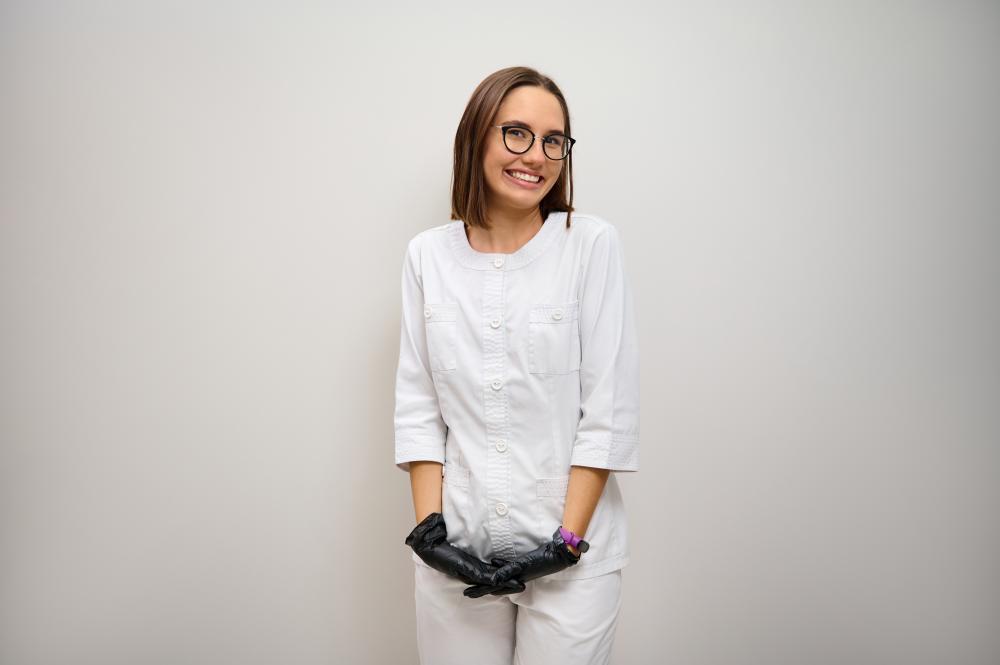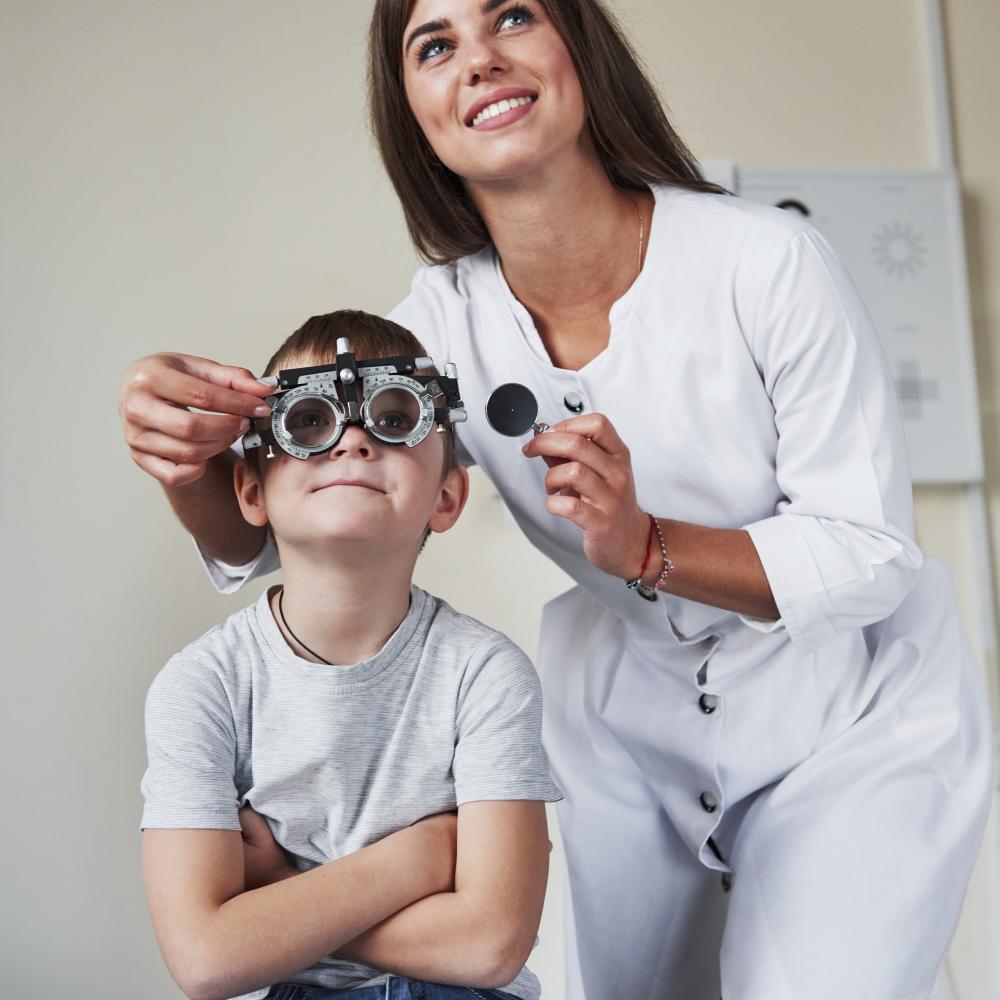Table of Contents
Understanding Medical Eye Patches for Adults

Medical eye patches for adults are not just the stuff of pirates and Halloween costumes. They hold a significant place in therapeutic eye care, offering a simple yet effective solution for a variety of visual ailments. As part of Fresnel Prism’s commitment to enhancing vision health, we believe in elucidating the roles and benefits of these patches. In the realm of optical health, these patches are more than just accessories; they are gateways to improved vision and comfort.
The Role of Eye Patches in Adult Vision Care
When we talk about medical eye patches for adults, we’re addressing a versatile tool in the arsenal of vision care. Whether it’s post-operative protection or the management of conditions like double vision, eye patches serve as both shield and trainer for the visual system. In our practice, we’ve seen firsthand how an eye patch can redirect the brain’s attention to a weaker eye, strengthening it through what’s known as occlusive therapy.
The application of an eye patch is not a one-size-fits-all remedy. Each individual’s situation calls for a personalized approach, determining when and how an eye patch should be incorporated into their treatment. For some, it’s a temporary measure following surgery, and for others, it’s part of a long-term strategy to balance visual input and muscle strength between both eyes.
Balancing Benefits and Limitations
There’s a delicate balance when recommending medical eye patches for adults. While they offer clear benefits in treating conditions such as amblyopia (lazy eye) or protecting an eye post-surgery, they are not a panacea. Professional guidance is crucial to ensure that using an eye patch does not obscure the need for other treatments or interventions.
In my career, I’ve observed patients who’ve experienced significant improvements in visual acuity through the disciplined use of an eye patch. However, it is vital to pair this with comprehensive eye care, as neglecting concurrent treatments can lead to a stagnation or decline in overall eye health.
Design and Comfort Considerations
The design of medical eye patches for adults has evolved over the years. At Fresnel Prism, we advocate for patches that not only serve therapeutic purposes but also prioritize user comfort. The material, adhesive quality, and fit all play roles in the overall effectiveness of the treatment.
Comfort is key, as an irritating or ill-fitting patch can deter consistent use, which is essential for therapeutic success. We’ve gone to great lengths to research materials that are gentle on the skin and secure enough to prevent peeking, which can undermine the patch’s effectiveness.

Personal experiences, like the story of a patient who struggled with a patch’s fit until finding the right material and adhesive, drive home the importance of customization. It’s why we continually seek feedback and adjust our designs–because a comfortable patch is a worn patch, and a worn patch can mean the difference between compromised vision and clarity.
Eye Patch Therapy in Practice
Therapeutically, medical eye patches for adults can facilitate remarkable progress. When dealing with conditions such as strabismus (crossed eyes), directing visual engagement to the weaker eye can retrain the brain’s visual processing. This practical application is often part of a broader therapeutic regime that may include exercises and professional monitoring.
But it’s not just about the physical patching; it’s about the psychological journey as well. Convincing an adult patient to adopt an eye patch, particularly when it comes to aesthetics and self-perception, can be challenging. Sharing stories of successful outcomes and providing a range of discreet patch options can help ease this transition.
One particular case that stands out is that of a novelist who, after suffering from double vision, was able to return to her passion for writing thanks to a carefully planned patching schedule. Her success story is a testament to the transformative potential of these simple devices.
Post-Surgical Recovery and Eye Patches
Following procedures like cataract surgery or corneal transplants, medical eye patches for adults serve as vital protectors. They shield the delicate tissues of the eye from light and inadvertent contact, fostering a safe environment for healing. In our practice, we emphasize the importance of these patches in post-operative care–not just for physical protection, but as a means of providing psychological reassurance to patients during recovery.
Choosing the Right Eye Patch
Finding the appropriate medical eye patch for adults requires considering the specific condition, the patient’s lifestyle, and the recommendations of a qualified eye care professional. It’s crucial to select a patch that will effectively address the condition without causing additional strain or discomfort.
It is paramount for patients to follow the advice of their eye care practitioners when it comes to the duration and frequency of wearing an eye patch. Deviating from the prescribed protocol can lead to suboptimal results or even exacerbate eye conditions.
Let me share a nugget of wisdom from experience: the journey to better vision through the use of an eye patch is not a solo venture. It requires a partnership between patient and practitioner to ensure that the chosen path is adhered to and adjusted as needed for the best possible outcome.
Innovations in Eye Patch Therapy
At Fresnel Prism, innovation is at the heart of what we do. We’re constantly exploring new materials, adhesives, and designs to make medical eye patches for adults not only more effective but also more comfortable and less intrusive in daily life.
The future holds promise for eye patches that integrate technology to monitor treatment adherence or patches that deliver medication directly to the eye. It’s an exciting time in the field, and we’re committed to being at the forefront of these developments.
We’ve seen the landscape of eye care evolve, and as we look forward, we remain dedicated to pioneering solutions that blur the lines between traditional methods and cutting-edge technology. The stories of our patients’ successes fuel our passion for pushing boundaries and exploring uncharted territories in vision care.
Patient Perspectives on Eye Patch Use
Incorporating an eye patch into one’s daily routine can come with its own set of challenges and adjustments. From the inconvenience of having impaired depth perception to the social self-consciousness it might evoke, patients often share their varied experiences with us.
One particular adult patient recounted how their initial hesitation to wear an eye patch in public slowly changed into a sense of empowerment. As they became more comfortable with their appearance, they also noticed their eye strength improving, which reinforced the value of the treatment.
Such insights and personal stories are invaluable. They remind us that behind every eye patch is not just an eye in need of care, but a person on a journey toward better vision and quality of life.
A Vision for the Future

As advocates for eye health, we at Fresnel Prism see medical eye patches for adults as small but mighty tools in the quest for optimal vision. From the design table to the recovery room, we’re here to support our patients through each step of their journey with compassion, expertise, and an unyielding dedication to innovation.
Whether you’re a seasoned eye patch wearer or new to the concept, remember that this journey is yours, but you’re not walking it alone. Together, let’s look to a future where every patch is a step closer to clarity, comfort, and a full, vibrant life.
Do eye patches work for adults?
Indeed, eye patches are a valuable tool for adults facing various visual issues. They’re not just for children or a fashion statement from days of yore but are instrumental in the therapeutic landscape of modern optometry. At Fresnel Prism, we regularly see the benefits that eye patches provide when used as part of a comprehensive vision care plan. For adults with conditions like amblyopia, also known as lazy eye, or those recovering from eye surgery, patches can facilitate the strengthening of a weaker eye or protect the eye during the healing process. The key to their effectiveness is proper use under the guidance of an eye care professional who can tailor the patching regimen to the individual’s needs.
Why do people wear medical eye patches?
There are numerous reasons why an adult might wear a medical eye patch, ranging from protection after an ocular procedure to the management of binocular vision disorders. For instance, in our practice at Fresnel Prism, we’ve assisted many patients with double vision, where an eye patch can help alleviate immediate symptoms while they undergo other corrective therapies. Additionally, eye patches serve to block visual input to an overdominant eye, thereby stimulating the weaker one and promoting visual balance and muscle strengthening. It’s a simple yet sophisticated approach that, when applied correctly, can have life-changing effects.
What are the medical eye patches for?
Medical eye patches serve a dual purpose: protection and rehabilitation. They guard against external irritants and light, which is crucial after surgeries such as cataract removal or corneal transplants. In terms of rehabilitation, they function as a part of occlusive therapy by covering the stronger eye to train the brain to use the weaker eye more efficiently. This method can correct or alleviate conditions like strabismus (misaligned eyes) and amblyopia. At Fresnel Prism, we ensure that each patch we provide is tailored to the patient’s specific condition, contributing to their recovery and comfort.
What are the best under-eye patches?
While under-eye cosmetic patches are popular for reducing puffiness and dark circles, medical eye patches are focused on therapeutic benefits. The ‘best’ medical eye patch is one that is custom-selected to match a patient’s particular eye condition, ensuring it is the right size, material, and adhesive strength. The design should minimize discomfort and allow for consistent use, which is paramount for therapeutic success. We at Fresnel Prism take pride in our dedication to research and patient feedback, which aids us in providing patches that not only meet medical needs but also offer ease of use and comfort.
How to choose the right medical eye patch?
Choosing the right medical eye patch is a decision that should be made with careful consideration and professional advice. Every patient’s needs are unique, depending on their specific visual condition, lifestyle, and the nature of their treatment plan. We encourage a dialogue between the patient and their eye care practitioner to select a patch that provides the necessary therapeutic benefits without sacrificing comfort. At Fresnel Prism, we involve our patients in the decision-making process, ensuring that the selected eye patch aligns with their treatment goals and daily life, ultimately leading to better adherence and outcomes.
Can eye patches be integrated with technology?
With technological advancements, there’s exciting potential for integrating smart technology into medical eye patches. Imagine a patch that not only assists in vision therapy but also monitors a patient’s adherence to the treatment plan. We are exploring possibilities like embedded sensors to track wear time or even patches capable of delivering medication at controlled intervals. At Fresnel Prism, innovation is part of our ethos, and we are eagerly contributing to the evolution of eye patches from mere coverings to multifunctional, technologically advanced devices that enhance patient care and compliance.
Resources on Medical Eye Patches
- American Academy of Ophthalmology: Offers detailed information on amblyopia (lazy eye) and the use of eye patches as part of the treatment. Visit AAO
- National Eye Institute (NEI): Provides comprehensive resources on eye health, including the therapeutic use of eye patches for various conditions. Visit NEI
- Centers for Disease Control and Prevention (CDC): Discusses eye safety, protective eyewear, and the importance of protecting eye health. Visit CDC
- Prevent Blindness: A nonprofit organization dedicated to fighting blindness and saving sight, providing educational materials on eye health and safety. Visit Prevent Blindness
- The Vision Therapy Center: Explores the benefits of vision therapy, which may include the use of an eye patch to improve certain vision disorders. Visit The Vision Therapy Center
- Mayo Clinic: A trusted resource for health information, including eye conditions that may be helped by eye patches. Visit Mayo Clinic
- MedlinePlus: A service of the U.S. National Library of Medicine with resources on eye care and disorders that can be treated with eye patches. Visit MedlinePlus
- Kellogg Eye Center – University of Michigan: Offers patient care guides, including information on conditions that might require the use of eye patches. Visit Kellogg Eye Center
